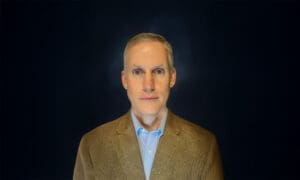Since November 2016, following the election of Donald Trump, at least 22 reported hate crimes, primarily blamed on supporters of Trump, have been found to be hoaxes, according to the Daily Caller (which is the source for much of this column).
The latest involves liberal actor Jussie Smollett who is accused of staging a racist and anti-gay attack on himself, which Smollett blamed on supporters of President Donald Trump. Smollett’s alleged fake “hate crime” appears to be the latest instance of people manufacturing hate crimes for attention in the Trump era.
One of the more recent hoaxes involved the Covington Catholic School students, some of whom were wearing MAGA hats, who were said to be disrupting and harassing a Native American man banging a drum. Subsequent videos showed the story, as perpetuated by the national media, celebrities, and leftists everywhere, to be false.
Some of these students were even the recipients of death threats. Attorneys for the student receiving the most vitriol have filed a $250 million lawsuit against the Washington Post for defamation. Other lawsuits against those who perpetuated the hoax are said to be pending.
What all of these hoaxes have in common, other than their being lies, is the attention given to them by the media and the rapidity of liberals jumping on the bandwagon far before the true facts were revealed. Not only have politicians, actors, and newscasters been guilty, millions of people flooded social media with their sense of horror and outrage that such crimes had occurred. Except, they hadn’t.
In the Kavanaugh hearings, several women alleged that the nominee for the Supreme Court had assaulted women, apparently on a regular basis, in his younger years. Without waiting for any facts, save accusations, Kavanaugh was pummeled from all directions in an attempt to either ruin his chances of being confirmed or to pressure him into withdrawing from contention. Since then, nearly all of these allegations have been “walked back,” as they say.
In Denton, Texas, resident David Williams set his own car on fire and painted “n***** lovers” on his home’s garage, in an apparent attempt to stage a hate crime. Local police investigated the arson as a hate crime. Williams and his wife, Jenny, collected more than $5,000 from Good Samaritans via a GoFundMe page before the hoax was exposed.
An 18-year-old Muslim woman in Louisiana claimed in November 2016 that two white men, one of whom was wearing a Trump hat, attacked and robbed her, taking her wallet and hijab while yelling racial slurs. She later admitted to the Lafayette Police Department that she made the whole thing up.
And the list goes on. One of the things I learned while serving as a law enforcement chaplain for 25 years is that people lie. They lie all the time. Even the most honest people can get caught in a lie. Sometimes people lie to protect feelings. What man has not heard the question, “Does this make me look fat?” Only the most foolhardy will tell the truth if, indeed, it does make her look fat.
Not all lies involve hate crimes, of course. I recently learned of a person who was hired by a major Southern university for a faculty position. There were many applicants but this person had the best resume. Except that it wasn’t. It was faked. The offer was withdrawn.
As noted earlier, part of the problem is that people lie, they lie for a variety of reasons, and they lie because they have an agenda. The other part of the problem is that people also want to believe that people are generally honest and that they tell the truth. So, an accusation, however flimsy or untruthful, tends to be believed by sympathetic people.
But when the lie fits a preconceived narrative, then people lose their perspective, abandon the “innocent until proven guilty” premise, and jump on the accused with both feet. Later, when the hoax is exposed, some even persist in their delusion by saying, “Well, even if this one was false, it’s still true somewhere.”
No, a lie is a lie. People have been hurt by these accusations and reputations ruined. The media has always seemed to love stories like these.
Of course this stuff has always happened to some extent. Back in 1987, 15-year-old Tawana Brawley accused four white men of a vicious rape. The case gained national attention especially because the four men included police officers and a prosecuting attorney. Bill Cosby offered a $25,000 reward for information on the case (seems ironic, huh?) and Louis Farrakhan led a protest march.
When civil rights activist Al Sharpton, with attorneys Alton H. Maddox and C. Vernon Mason , began handling Brawley’s publicity, the case quickly became highly controversial. Sharpton, Maddox, and Mason generated a national media sensation. The three said that officials all the way up to the state government were trying to cover up defendants in the case because they were white. They further asserted that the Ku Klux Klan, the Irish Republican Army and the Mafia were collaborating with the U.S. government in the alleged cover-up.
A grand jury was convened. Brawley never testified despite a subpoena ordering her to do so. On June 6, 1988, Tawana’s mother Glenda Brawley was sentenced to 30 days in prison and fined $250 for contempt of court for refusing to testify at the grand jury hearing. She evaded arrest by hiding in churches, with the police failing to arrest her, arguing it would lead to violence. The Brawley family then fled New York state, traveling around the country for several months before settling in Virginia Beach.
Much of the grand jury evidence pointed to a possible motive for Brawley’s falsifying the incident: trying to avoid violent punishment from her mother and her stepfather, Ralph King. Witnesses testified that Glenda Brawley had previously beaten her daughter for running away and for spending nights with boys. King had a history of violence that included stabbing his first wife 14 times, later shooting and killing her.
There was considerable evidence that King could and would violently attack Brawley: when Brawley had been arrested on a shoplifting charge the previous May, King attempted to beat her for the offense while at the police station. So one can understand why she might lie.
The grand jury, which heard 180 witnesses and viewed 250 exhibits, including a rape kit, found no evidence that the alleged assault ever occurred. Afterwards lawsuits were filed against Brawley’s advisors for defamation. Yet there are still people who insist that the incident occurred. Why? It fits their narrative.
There is enough real crime in this nation without people making stuff up. But as long as people jump to conclusions, as long as the media reports accusations without facts, as long as we want to believe the worst about people, we will continue to see these lies presented as reality.
I used to think that, in our country, we were better than this. Apparently, I was wrong.
[David Epps is the pastor of the Cathedral of Christ the King, 4881 Hwy. 34 E., Sharpsburg, GA between Newnan and Peachtree City (www.ctk.life). He is the bishop of the Charismatic Episcopal Diocese of the Mid-South which consists of Georgia and Tennessee. He may contacted at [email protected].]













Leave a Comment
You must be logged in to post a comment.